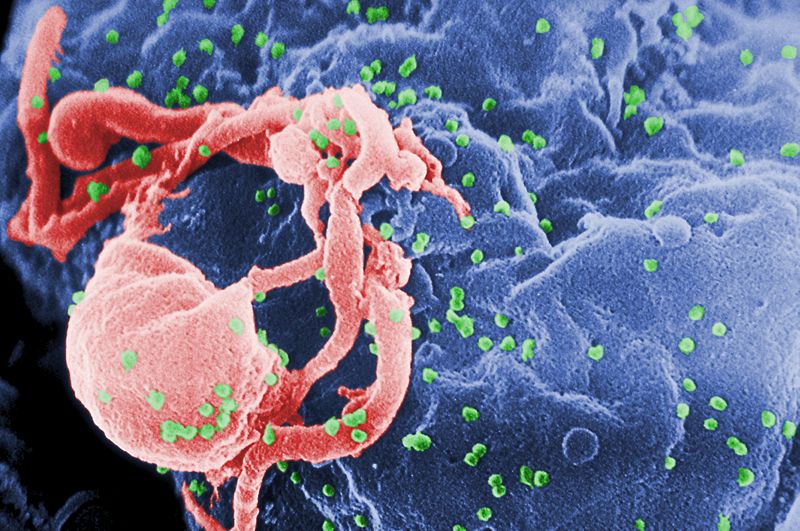An international team of scientists have found new evidence pointing to 1908 as the year when HIV was born. Writing in Nature this week, University of Arizona researcher Mike Worobey describes how he and his colleagues uncovered traces of a fossil form of HIV in tissue samples collected in Africa nearly 50 years ago.
 |
| HIV viruses in green budding from a lymphocyte © Centers for Disease Control and Prevention |
Working with scientists in the Democratic Republic of Congo, which was historically a Belgian colony, the team gained access to a collection of old biopsy specimens and tissue samples dating from 1960. The material had been chemically "fixed" and embedded in paraffin, which had helped to preserve it in reasonable condition. The researchers dissolved away the wax and were able to extract genetic material from the samples, which they they then probed for signs of HIV. In one of the extracts, which was from a lymph node biopsy, they struck gold. The sample contained a virus frozen in time, giving the researchers a window back in time to the structure of HIV as it was in the 1960s, twenty years before the world even knew it existed.
The team then compared the genetics of the virus with those of another fossil sequence, uncovered several years ago in a blood sample collected in 1959. The two viruses were significantly different from one another, arguing that HIV had potentially been circulating and evolving in the human population for much longer than thought previously. According to Mike Worobey, "our best estimate for when HIV entered humans is 1908, but it might have been from 1884 to 1924." Either way, what's unarguable is that these dates are slap bang in the middle of the time when the first European settlers arrived and founded large cities like Leopoldville (now Kinshasha), and the team suspect that the high population density, debaunchery and risky behaviour that tends to go on in cities was probably the catalyst that unleashed HIV on the human population.










Comments
Add a comment